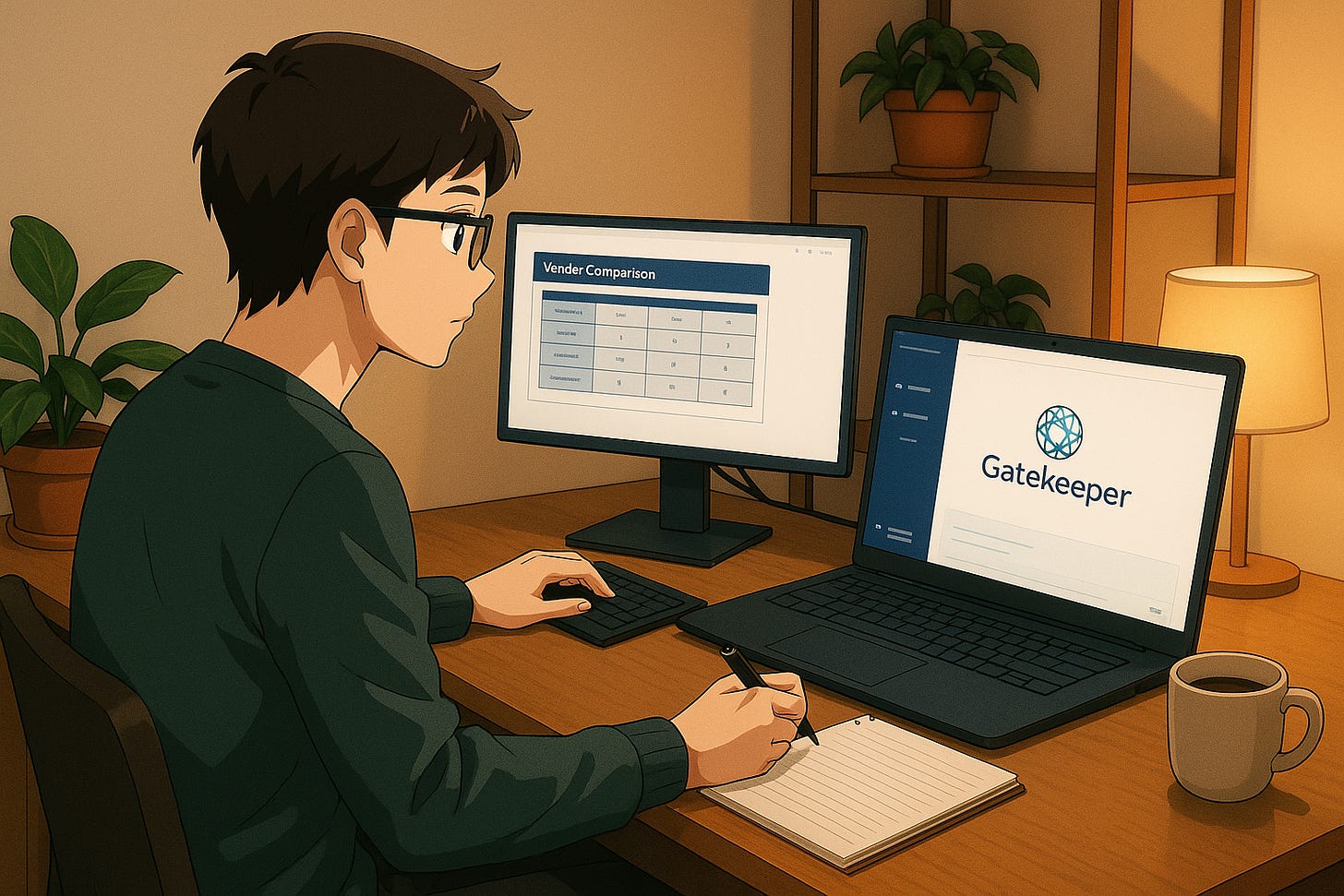This Is How I Compare Vendors in 2025
A real-world look at how AI and sourcing instincts now work together
Embracing the Future of Sourcing
Yes, I still roll up my sleeves and get stuck into traditional sourcing work from time to time.
At Gatekeeper, we are constantly on the lookout for new vendors, partners, and collaborators. Over the past few months, I have been involved in a few projects that reminded me how much this work is evolving.
One use case in particular stood out, and it is worth sharing. I will not go into the details of the service we were sourcing, because it is a live project, and I believe in keeping that kind of information private until the time is right. But what I can share is how the process played out and what it shows us about the new possibilities in procurement.
Gut Feel Still Matters
I had a call with a potential vendor and got a strong, positive impression. That kind of gut feeling has always been important in procurement. After working with many suppliers and partners over the years, I have learned to trust it.
After the call, I took some handwritten notes and used Aqua Voice Notator to upload them into our enterprise-secure instance of ChatGPT. That setup keeps everything private and under our control. From there, I started connecting ideas and insights from other sources. For me, building links between different contexts is a powerful way to think and work.
With that input, I was able to produce a polished summary designed for executive-level review. That already felt like a solid outcome.
Comparing Two Suppliers
We also had another vendor in mind, one we are already familiar with, who has a stronger marketing presence and a louder voice in the space.
I wanted to see how this new vendor compared, so I provided ChatGPT with my summary notes, which it had already helped me refine. Then I moved into deeper research using a reasoning model called O3. This model is designed to take its time, think through steps, and work with more complexity. For layered tasks like vendor evaluation, it is a much better fit than the faster, more reactive models.
Iteration Improves Outcomes
The first version of the comparison was decent, and it got us about 60 percent of the way there. But I noticed that the model did not represent one of the vendors fairly. It missed a few important details and leaned too far in one direction.
So I prompted it again, giving some additional context. The second output was much better. It gave me a clear, well-structured view of both options and helped me highlight where the real value was, along with a recommendation for which vendor we should choose and why.
Speed and Precision Combined
What stood out to me was the pace. This work would have taken weeks in the past. It would have involved meetings, back-and-forth emails, and lots of documentation.
Now, it was completed in an afternoon. And I did not even need to block out time specifically for it. I worked on this in between other tasks. It is not even my core focus anymore, but with the right tools and process, it still felt seamless and high impact.
A New Way of Working
This ties back to something I have talked about recently, which I call vibe procurement.
It is about trusting your instincts, using the right tools, and working in a way that feels natural while still delivering results.
You do not need to be an expert in AI or digital tools. You just need to be open to exploring new ways of working. If you do that, you will discover better, faster, and more insightful ways to get the job done.
Final Thoughts
Procurement is changing. The tools are improving, the workflows are becoming smarter, and the value you can deliver is only increasing, as long as you are willing to approach things differently.
This kind of work is not hypothetical. It is real, it is already happening, and it is having a measurable impact.





